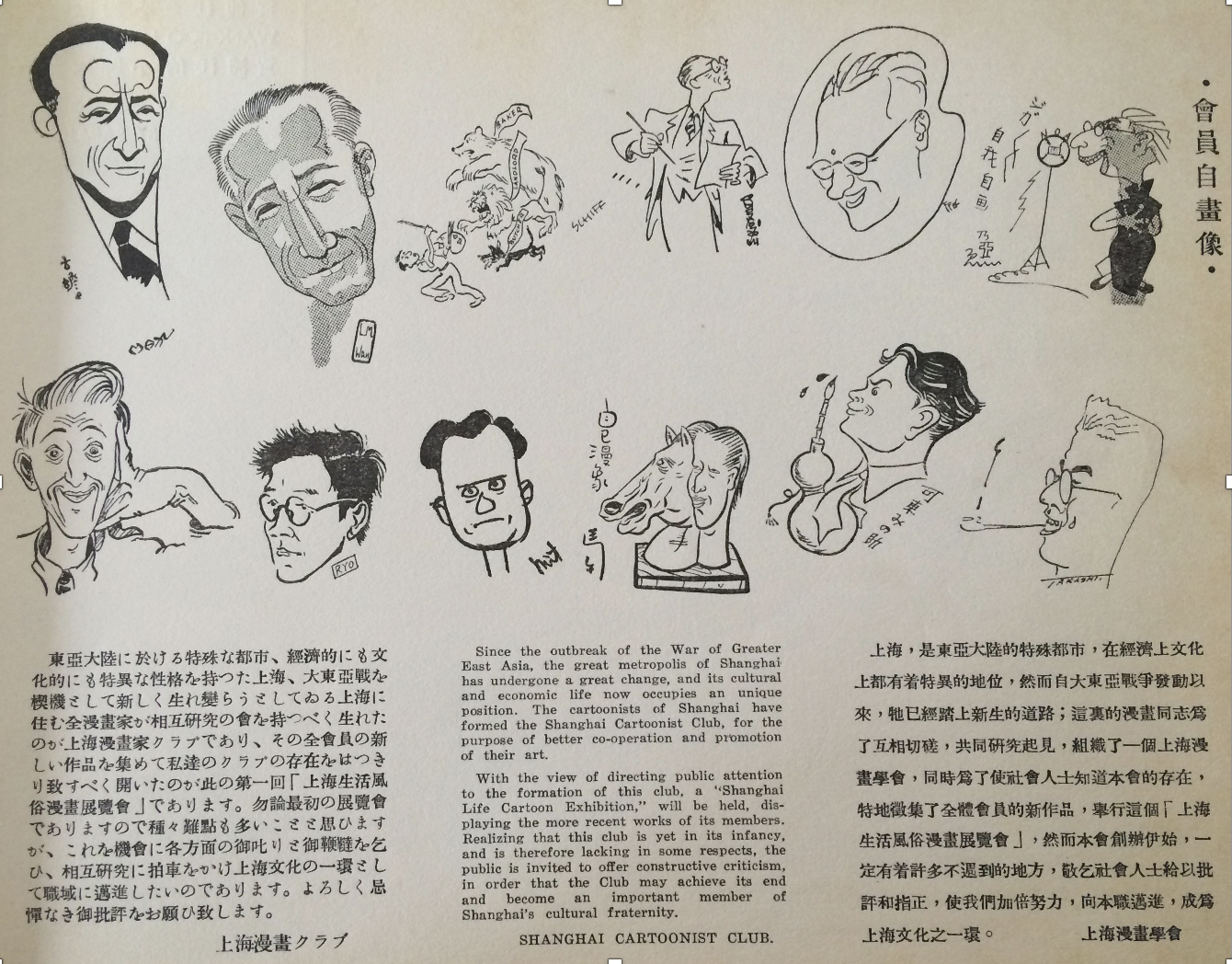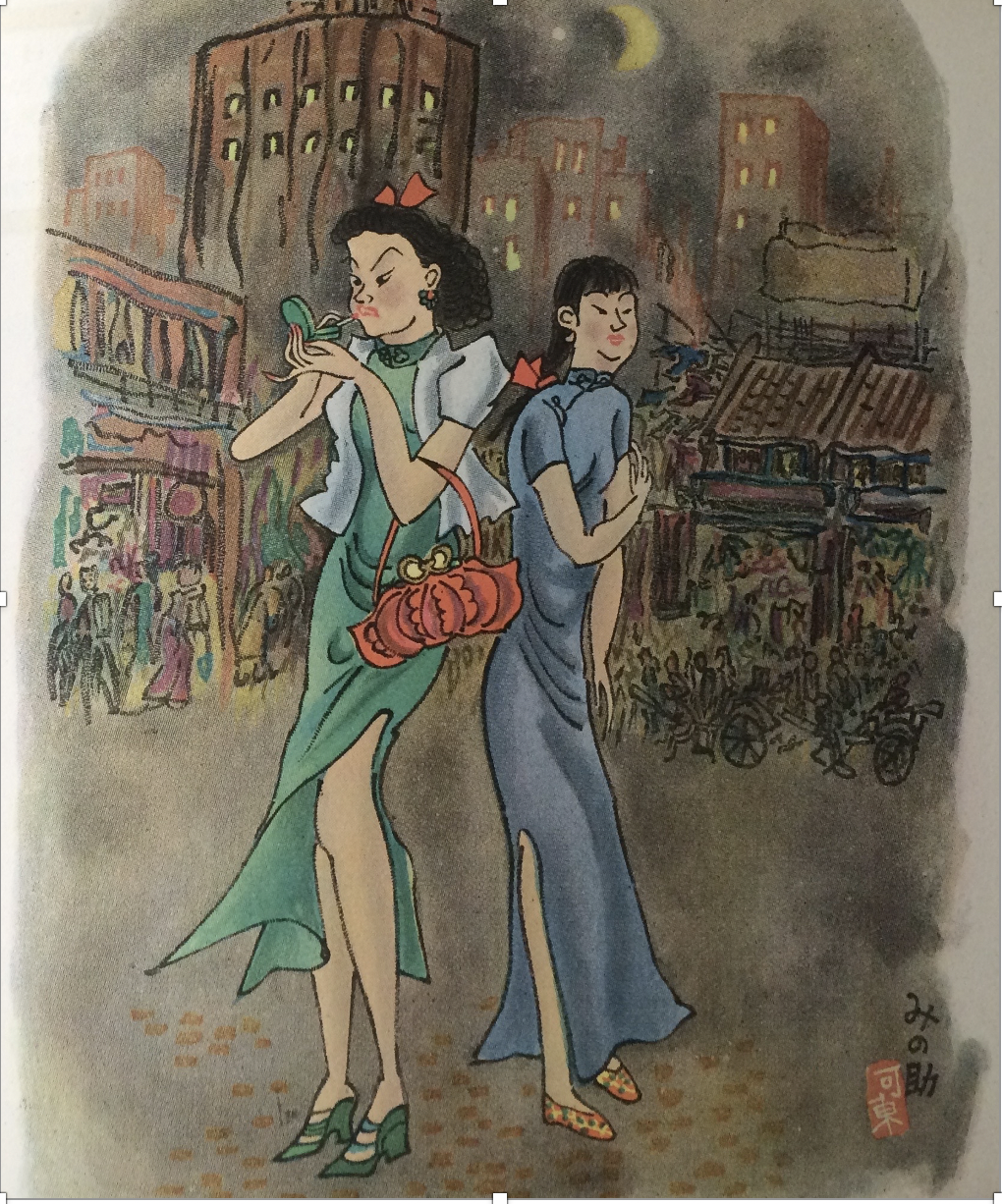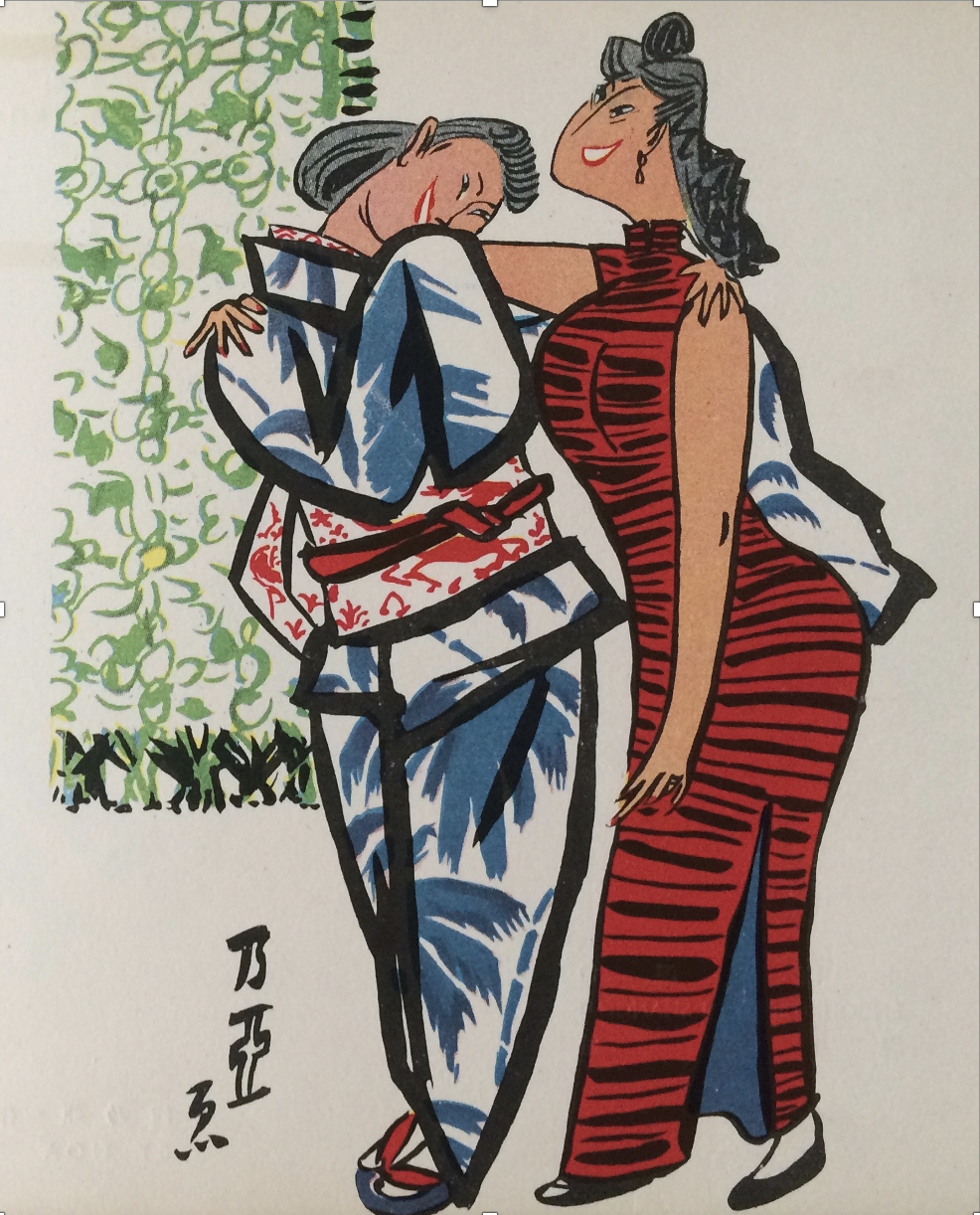Archive
Shanghai Life
- Book
- Shanghai Life
Word Count: 2
- Shanghai Cartoonist Club
- 1943
- 1945
Shanghai Art Gallery, 212 Nanking Road, International Settlement (Nanjing Don Lu, Huangpu Qu) Shanghai
- Shanghai (CN)
Shanghai Life was the first book published by the newly-founded Shanghai Cartoonist Club (March 7, 1942). The club held its first exhibition in June of the same year, at the Shanghai Art Gallery on Nanking Road (now Nanjing Dong Lu).
Word Count: 38

Shanghai Cartoonist Club, Shanghai Life, fist page, 1942. 
L. M. Wann (Wan Laiming), Beggar, detail, Shanghai Life, 1942. 
Mawoo (Ma Wu/Chen Xiazuo), Twilight comes to Fochow Road,detail, Shanghai Life, 1942. Fochow Road (now Fuzhou Lu) was in the International Settlement, running in East-West direction south and parallel to Nanking Road (now Nanjing Dong Lu), Still today the street is known for its book and calligraphy shops. 
Minosuke (Kato Minosuke), Nationalist & Internationalist, detail, Shanghai Life, 1942. This cartoon also uses the means of juxtaposition and makes use of the differently connoted variants within one form of dress which is the qipao here. Attributes, body posture and gestures differ accordingly. 
Noa (Miura Noa), Encounter in Shanghai, detail, Shanghai Life, 1942. The cartoon juxtaposes Japanese and Chinese clothing styles with different connotations. The cartoon juxtaposes Japanese and Chinese clothing styles with different connotations. The gestures and postures of the two figures differ. A concealed and covered body meets an openly posed and uncovered body. 
Schiff (Friedrich Schiff), Rain, detail, Shanghai Life, 1942. This cartoon shows a highly stylised version of a tall and underweight ‘modern Shanghai girl’ wearing a fashionable very fitted and very high slit qipao. Her body parts are extremely exposed and flaunted by her gesture. She carries small shopping parcels, wears high heels and bright red lipstick instead of clothing appropriate to the climatic conditions. Bevan, Paul. A Modern Miscellany: Shanghai Cartoon Artist, Shao Xunmei’s Circle and the Travels of Jack Chen 1926–1938. Brill, 2016.
Ikeda, Asato. “Twentieth Century Japanese Art and Wartime State. Reassessing the Art of Ogawara Shū and Fujita Tsuguharu.” The Asien Pacific Journal, vol. 8, no. 43, no. 2 October 25, 2010.
Lee, Leo Ou-fan. Shanghai Modern: The Flowering of a New Urban Culture in China, 1930–1945. Harvard University Press, 1999.
Lent, John A. and Xu Ying. Comics Art in China. University Press of Mississippi, 2017.
Pekar, Thomas. editor. Flucht und Rettung. Exil im Japanischen Herrschaftsbereich (1933–1945).“ Dokumente, Texte, Materialien. vol. 81, Metropol, 2011.
Taylor, Jeremy E. “Collaboration in Wartime China: The Mobilization of Chinese Cartoonists under Japanese Occupation.” Modern China, vol. 41, no.4, pp. 406–435.
Zhuang, Muyang. “A Literature review on Manhua Studies.” Association for Chinese Manhua Studies, Research Centre, Short Essays, 29 January 2021.
http://acas.ust.hk/2021/01/29/a-literature-review-on-manhua-studies/. Accessed 2 February 2021.Word Count: 136
Österreichisches Institut für China- und Südostasienforschung, Wien, Estate of Friedrich Schiff.
Word Count: 13
- Shanghai
- Mareike Hetschold. "Shanghai Life." METROMOD Archive, 2021, https://archive.metromod.net/viewer.p/69/2952/object/5140-11786424, last modified: 22-06-2021.
-
David Ludwig BlochArtistShanghai
David Ludwig Bloch is known for his paintings and watercolours revolving around the Holocaust and his exile. With the woodcuts from his time in exile in Shanghai, Bloch created an artistic account of everyday life in the city, while harvesting the simplicity of form and colour of the medium.
Word Count: 49
Friedrich Hermann SchiffArtistCartoonistDesignerShanghaiFriedrich Schiff was an Austrian-born artist who went to Shanghai in 1930. He became known for his humorous cartoons, which were enjoyed by the colonial bourgeoisie.
Due to his Jewish origins, he was unable to return to Austria after Hitler’s annexation of Austria in 1938. He left Shanghai for Buenos Aires in 1947.Word Count: 51
Association of Jewish Artists and Fine Art Lovers (ARTA)AssociationShanghaiSeven Jewish artists living in the so-called Shanghai Ghetto joined together to form an art association in 1943. The founding members were: David Ludwig Bloch, Paul Fischer, Fred Fredden Goldberg, Ernst Handl, Max Heimann, Hans Jacoby and Alfred Mark.
Word Count: 38
Richard PaulickArchitectDesignerShanghaiAfter studying with Hans Poelzig, Richard Paulick worked in Walter Gropius’s office and frequented the Bauhaus in Dessau before emigrating to Shanghai in 1933. After his return, he became an influential planner and architect in the GDR, from 1950 until his retirement
Word Count: 41